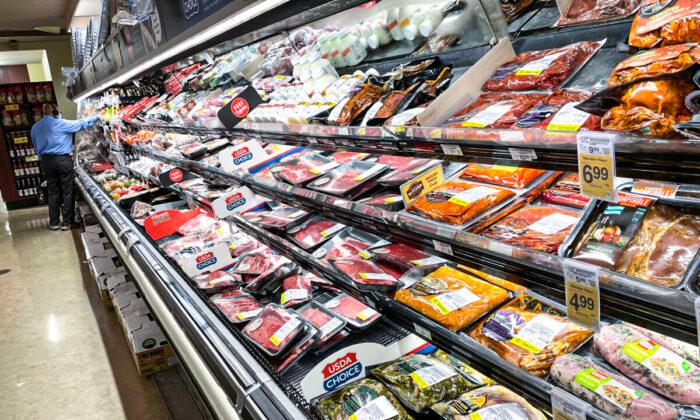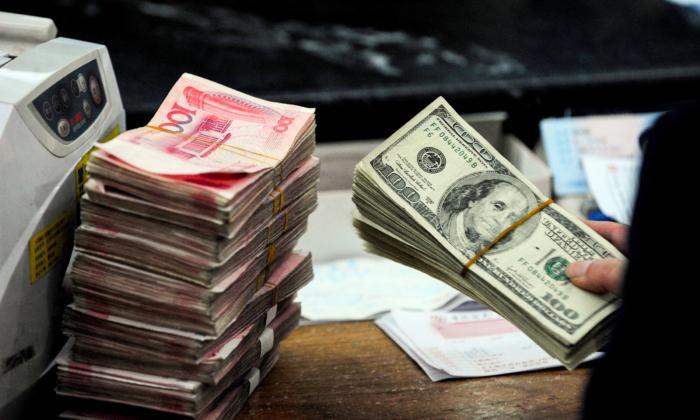Washington has at last admitted what every American has known for months: the country suffers a painful inflation.
For the longest time, those in authority have dismissed people’s concerns, insisting that the inflation is “transitory.” But Washington has had to change its tune. No one admits error—who in Washington ever does?—but officials now acknowledge reality and have walked back earlier comments. More important than the rhetoric, monetary policy has begun—though only just begun—to deal with the inflationary menace.
The flow of data made the change. At the close of 2020, the Federal Reserve (Fed) confidently forecast low inflation for 2021. Using its preferred indicator, the consumer price deflator, it expected 1.8 percent inflation for this year. Early in the year, the new Biden administration also forecast low inflation. Its budget forecast put 2021 CPI inflation at 2.1 percent. In the first six months of the year, the CPI rose at a 7.4 percent annual rate. Washington still dismissed the news.
By October, the CPI was still up at a 7.0 percent annual rate for the year so far, more than three times the original forecast. The consumer price deflator had risen at a 5.1 percent annual rate, more than twice the Fed’s original forecast. It became impossible to dismiss reality.
Washington blames the entire inflation on supply chain problems. The months of lockdown and quarantine in 2020 and in 2021, their argument goes, left production facilities and shipping arrangements unable to respond fully to the global economy’s rebound once the pandemic strictures lifted. The argument is valid as far as it goes. Supply chain issues have indeed contributed to inflationary pressures. But the official commentary ignores a more complex and sinister story.
There is, for instance, the ocean of liquidity the Fed has poured into the economy for 13 years now since the 2008-09 financial crisis. Throughout this time, the Fed has created enough money to finance a long succession of federal budget deficits under presidents Barack Obama, Donald Trump, and now Joe Biden, purchasing almost $6 trillion in treasury debt, some $3 trillion just since the pandemic began. History and economic theory both argue forcefully that such behavior is inflationary. Scholarship on this subject notes “long and variable lags” from the provision of liquidity to the appearance of inflation. It would seem that today’s inflation announces that these lags have at last caught up with the economy. If this is the case, then inflation will have staying power well beyond the time when supply chain matters resolve themselves.

Adjustments in global trading patterns have also made an inflationary contribution. For decades now, developed economies have sourced cheap products from China and other emerging economies. But now wages in China especially—though still low by the standards of the developed world—are beginning to catch up, while the old supply arrangements are becoming less reliable.
Perhaps it was these cheap sources that extended the lags from floods of liquidity to an inflationary response. Whether this is true or not, it should be clear that a major inflation moderator of the past is weakening.
And then there is this country’s demographics. Decades of low birth rates have slowed the flow of new workers into the labor force just as the huge baby-boom generation is retiring. Today’s immediate labor shortage has other causes, but the demographic effect will surely intensify labor shortages over time, creating an inflationary push of its own.
Especially because of these additional inflationary considerations, the announcement by the Fed of a change in policy is encouraging. The Fed has stated that it will gradually slow the pace at which it adds liquidity to financial markets—what the Fed calls “quantitative easing.” Each month it will add a little less than the month before until, by the middle of 2022, the Fed will end the program and cease all quantitative easing.
Then, if the inflation has not yet abated, the Fed plans to raise interest rates and move toward a more restrictive, anti-inflationary policy posture. If the inflation truly were only a reflection of supply chain issues, none of this would be necessary. That the Fed has begun the process says that policymakers may be a bit more concerned than they have otherwise revealed.
The Fed’s policy change may be too little, too late to head off the inflationary pressures, not the least because federal government spending continues along an extremely expansive and potentially inflationary path, but one takes what one can get.





